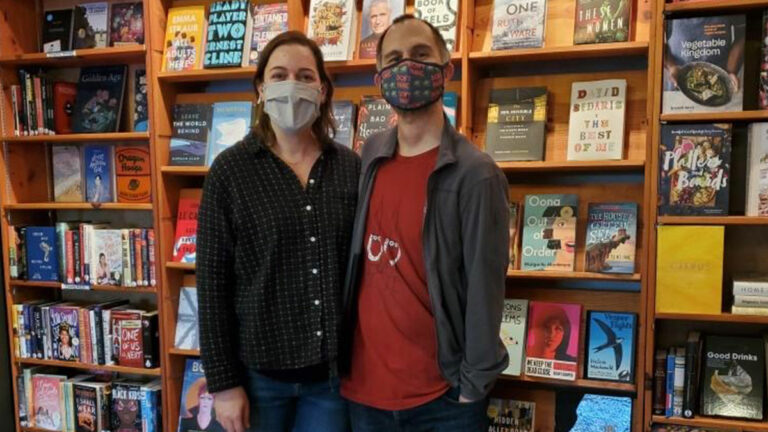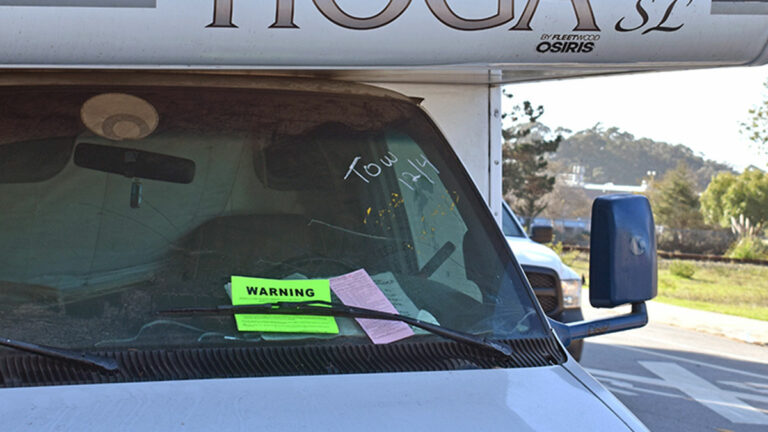This year has been weird for everyone, but it’s been especially weird at the Santa Cruz County Animal Shelter.
It’s the kind of year where a Santa Cruz resident can unknowingly receive a large and angry iguana in a package on her doorstep. And also one in which shelter staff had to turn the very definition of what they do upside-down to serve a county population whose lives were similarly upended by both the Covid-19 pandemic and wildfires that forced tens of thousands of residents to evacuate. The expanded—and often, completely unexpected—roles that shelter staff took on are interesting in themselves, but they also serve as a microcosm for how so many of the nonprofits in this county had to pivot, sometimes radically, to serve the needs of its residents.
It’s important to note that the Animal Shelter itself is not technically a nonprofit organization; it’s a department of the county government. However, the Santa Cruz County Animal Shelter Foundation, which supports it, is a nonprofit—one of the 40 that are part of this year’s Santa Cruz Gives fundraising campaign. While the structure and setup of the shelter itself is different, its staff’s experience navigating the chaos of this year is very similar to what so many of the nonprofits in Santa Cruz Gives went through. Here are the five craziest things the Animal Shelter did for the love of Santa Cruz County—both its animals and people—in 2020.
1. The Iguana Incident: OK, this isn’t related to the Covid-19 pandemic or the wildfires, but it sums up so perfectly how none of us could ever really tell what the universe had in store for us this year. Just last week, the shelter found a home for an iguana they named Ursula, which had been shipped from parts unknown to a local woman who had definitely not ordered an iguana.
“This woman receives this box in the mail,” says the shelter’s program and development manager Erika Anderson, “and as she starts to open it, she realizes that one, she did not order this, and two, the bag inside says ‘Ten Vine Snakes.’ So she’s like, ‘Oh yeah, I’m not opening this. I’m taking this to the animal shelter.’ Which luckily she did, because she would have been in for a real surprise if she opened it. It wasn’t ten snakes, it was a huge iguana.”
The shelter staff thought the iguana was surely dead when they opened the bag, because iguanas need tropical temperatures—as in 85-plus degrees, with 70% humidity—and this one had been shipped inside a bag, which was inside styrofoam, which was inside a cardboard box, in the cold of November. Incredibly, however, it was very much alive.
“She was freezing cold, so we got her set up, and she started to warm up,” Anderson says. “And that’s when she told us she did not like people.”
This is not unusual for iguanas—with the exception of some who have been socialized since birth, they generally do not want to be handled by humans, and a slap from their tails is capable of breaking your arm to prove it. However, no bones were broken, and this story has a happy ending now that the shelter has found a suitable home for Ursula.
“She’s going to a rescue that’s equipped to deal with her, to make sure she lives a safe and happy life,” Anderson says.
2. Feeding the Humans: Here’s one for those who’ve echoed a dismissive sentiment the Animal Shelter staff sometimes hears: “Well, but you only help animals.” Certainly it seems odd to any animal lover for that to be said as if it’s a bad thing, but it’s also untrue—the shelter is equally dedicated to helping the people who need essential services to care for and keep their animals. But even the shelter’s staff weren’t expecting that a huge part of their job after Covid-19 hit—or more accurately, another job on top of their other jobs—would be entirely focused on serving clients with two legs.
“At the start of the pandemic, Santa Cruz County set up multiple emergency homeless shelters to get the unhoused community into safe spaces where they could quarantine and not be living on the street,” Anderson says. “They were providing them with three meals a day, which were delivered by our animal control officers. And all of our employees, on top of doing our normal duties, were working shifts at the Veteran’s Hall in downtown Santa Cruz, doing things like checking people’s temperatures going in and out. We would sign them in and out so they could go for walks, cleaning up the facility, handing out breakfast, lunch and dinner.”
They were also delivering food to hotels, where some Covid-19 quarantiners were being housed. The reason all of this fell to the shelter staff, despite the fact that they make up one of the smaller departments in the county, is an extremely practical one: They were already on the front line of the pandemic, while many of the other county departments were closed, says Anderson.
“We were already essential workers, and we were here working with the public anyway,” she says.
3. Frankie the Turtle and Other Evacuees: During and after the CZU Lightning Complex fire, the shelter was called on to help many families who had been forced to evacuate their Santa Cruz Mountains homes. As anyone who’s lived in the Santa Cruz Mountains knows, residents there sometimes keep some unusual pets. A lot of tortoises suddenly came into the shelter, for instance, including a large one named Frankie whose family had to give him up because they lost their home in the fire. He was adopted within three days.
Anderson says Santa Cruz Equine Evacuation was instrumental in getting not only horses but many other animals to the fairgrounds. A lot of these animal evacuees were cared for by the Animal Shelter, both at the evacuation sites and at their facility. The problem was making space for those animals—but it didn’t turn out to be much of a problem, thanks to the shelter’s volunteers.
“During the fires, in total we cared for about 4,500 animals,” she says. “About 400 animals were physically here at the shelter, which meant we had to get all of the animals already at the shelter into foster homes in order to accommodate that. Otherwise we could have never done that. We asked all of our volunteers ‘Can you please make room for the evacuated animals?’ And in one day, they were all in foster homes.”
The volunteers kept those animals through the fire and its aftermath, and sometimes even longer.
“We rely so much on our volunteers,” Anderson says. “They’re just phenomenal people.”
4. Petsitting in the Burn Zone: Besides the evacuee animals at the shelter and the fairgrounds, the other animals that made up the 4,500 the Animal Shelter cared for are the ones whose families had to leave them behind when they evacuated. Talk about being way into unexplored territory: The Animal Shelter was now petsitting, during one of the biggest fires in California history.
“No one wants to leave their pet behind, but as we saw with this fire, it just happens so fast,” Anderson says. “If you have a bunch of animals and you’re driving a sedan, how many can you realistically fit in there? And if you have horses and pigs and goats, what do you do?”
Well, one thing you could do is call on the Animal Shelter, which immediately started a service they called “feeding in place.” Along with members of the Equine Evacuation team, animal control officers would check on those animals, giving them food and water.
“We were getting calls from people where they’d say, ‘I don’t know if my animals are still alive, but I heard you guys are doing this. Can you please go to my address and check on the animals?’ Some people had even left cats or rabbits inside, and they would come and drop off their house key, and our officers would go up there and they would be able to report back; some of them would send a photo to the family—‘Fluffy’s still here and everything’s good.’ They’d give them food and water and let them know, ‘I’ll come back and check on them at this date and time.’ It brought people peace of mind.”
5. Going Where the Puppies (and Their People) Are:
When the pandemic started, the shelter quickly started a weekly pet food pantry to give out donated pet food to anyone who needed it. The demand was greater than they anticipated, but luckily so was the supply, Anderson says.
“Now we have so much pet food that people can just come to the shelter any day we’re open, 10am-6pm, and just ask for food and we’ll go grab them a bag. Because so much was donated, we don’t have to have a specific day for it anymore,” she says. “We’ve done things like going out to the food distribution sites in Watsonville at schools and stuff, and we’ve just taken our van full of dog and cat food and given it away to people who need it. We usually run out in 45 minutes.”
There was also the question of how they would continue their Healthy Pets for All Program, which provides vaccinations, pet supplies, flea medicine and more to those in need.
“Sometimes we serve 80 people when we do those clinics, so it wouldn’t be safe for us to do that,” Anderson says. “But I kept hearing about puppies being born in the encampments, and knew we needed to do something about it. So myself and an RVT [Registered Vet Technician] and one of the other staff members, we were going into the encampments, finding the puppies, vaccinating the puppies, getting them signed up for spay and neuter, and basically meeting the people where they were so that we could safely keep a six-foot distance and still get the animals vaccinated and get them what they needed.”
There has been an unexpected benefit to this particular adaptive move.
“It has really improved some of our relationships. We’ve been able to spay and neuter dogs that we’ve been trying to spay and neuter for years,” Anderson says. “I think sometimes there’s this assumption that we’re going to take the dog away, like the Lady and the Tramp version of the pound. That we’re the bad guy. And that’s not the case. But for some people who believe that, and who are needing these services because they can’t afford them, us meeting them where they’re camping with their pet, and showing them, ‘We’re not going to take your pet anywhere. We’re bringing the vaccines right here in this ice chest, and you can hold your dog while we vaccinate them for free,’ I think it’s really showed people that we are here to help them. We want them to keep their pets, and we want to help them keep their pets. I think it’s made a big difference.”
Livestream to support the Santa Cruz County Animal Shelter through Santa Cruz Gives
The Animal Shelter will present a “Holiday Serenade for Shelter Pets” livestream on Sunday, Dec. 13, from 4:30-6pm. Local musicians Henry Chadwick and Garrett Smart will be on site at the shelter to play holiday music for some of the shelter dogs and cats, and will be encouraging viewers to donate to the Animal Shelter Foundation at santacruzgives.org. Visit scanimalshelter.org for more information.
























